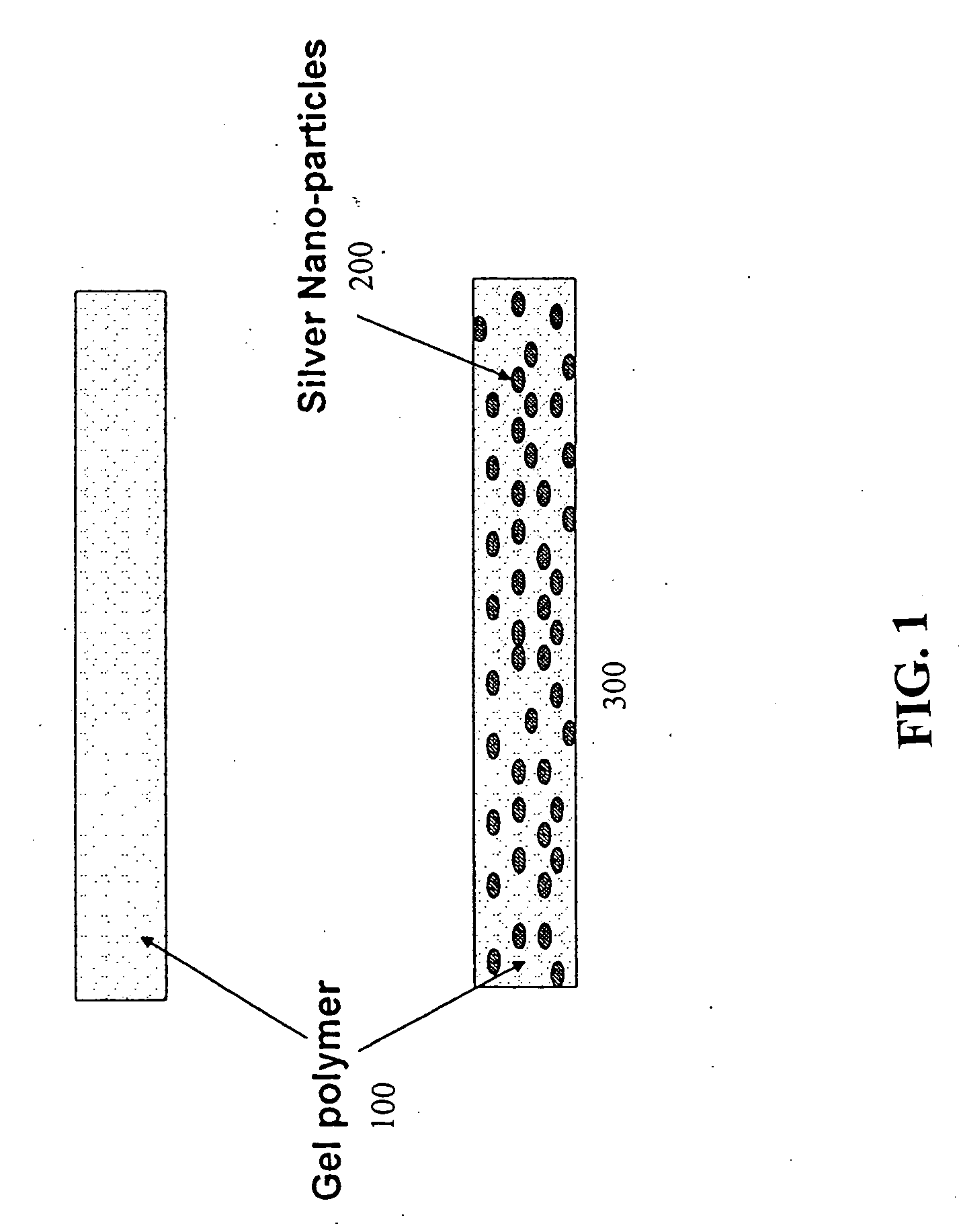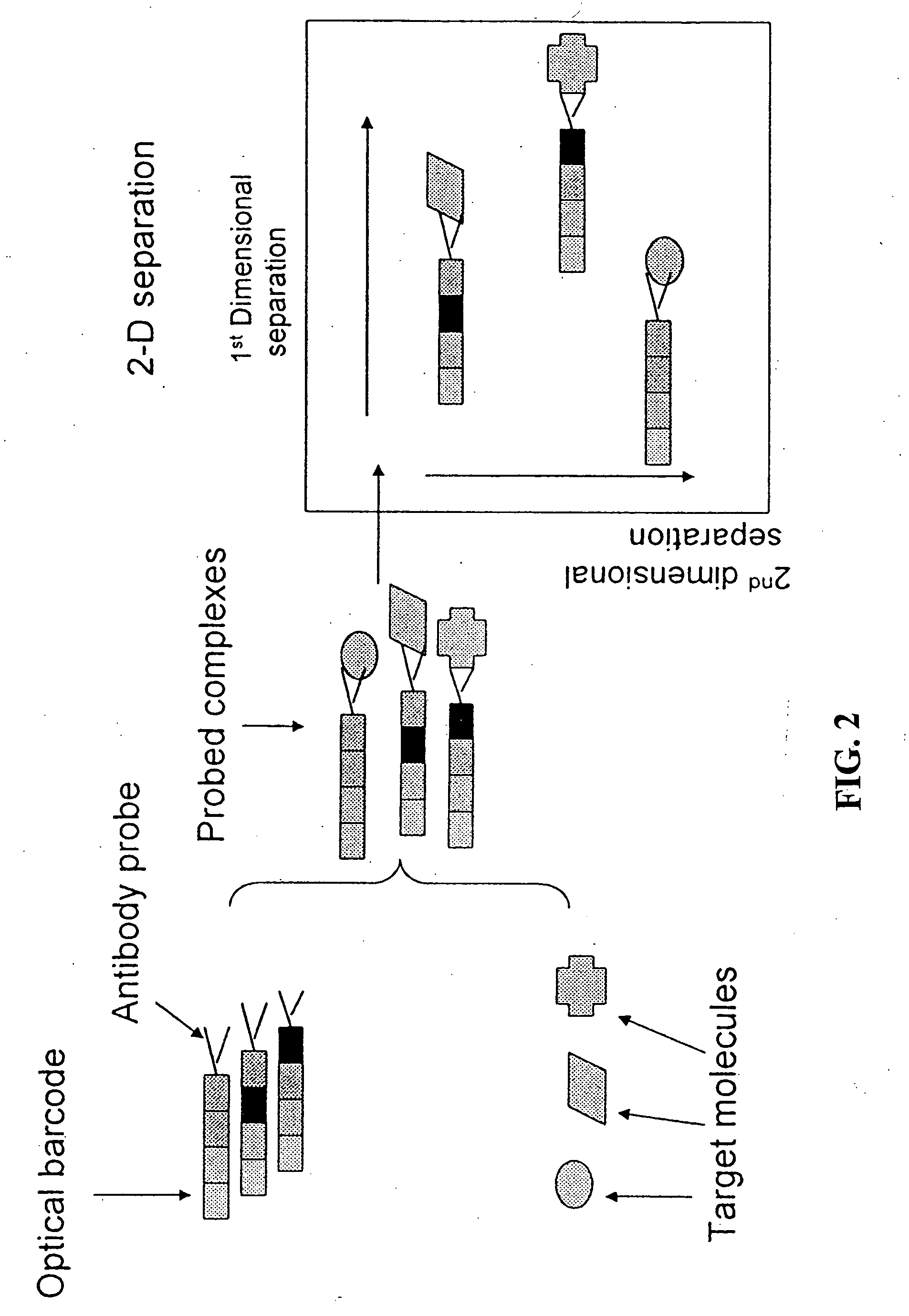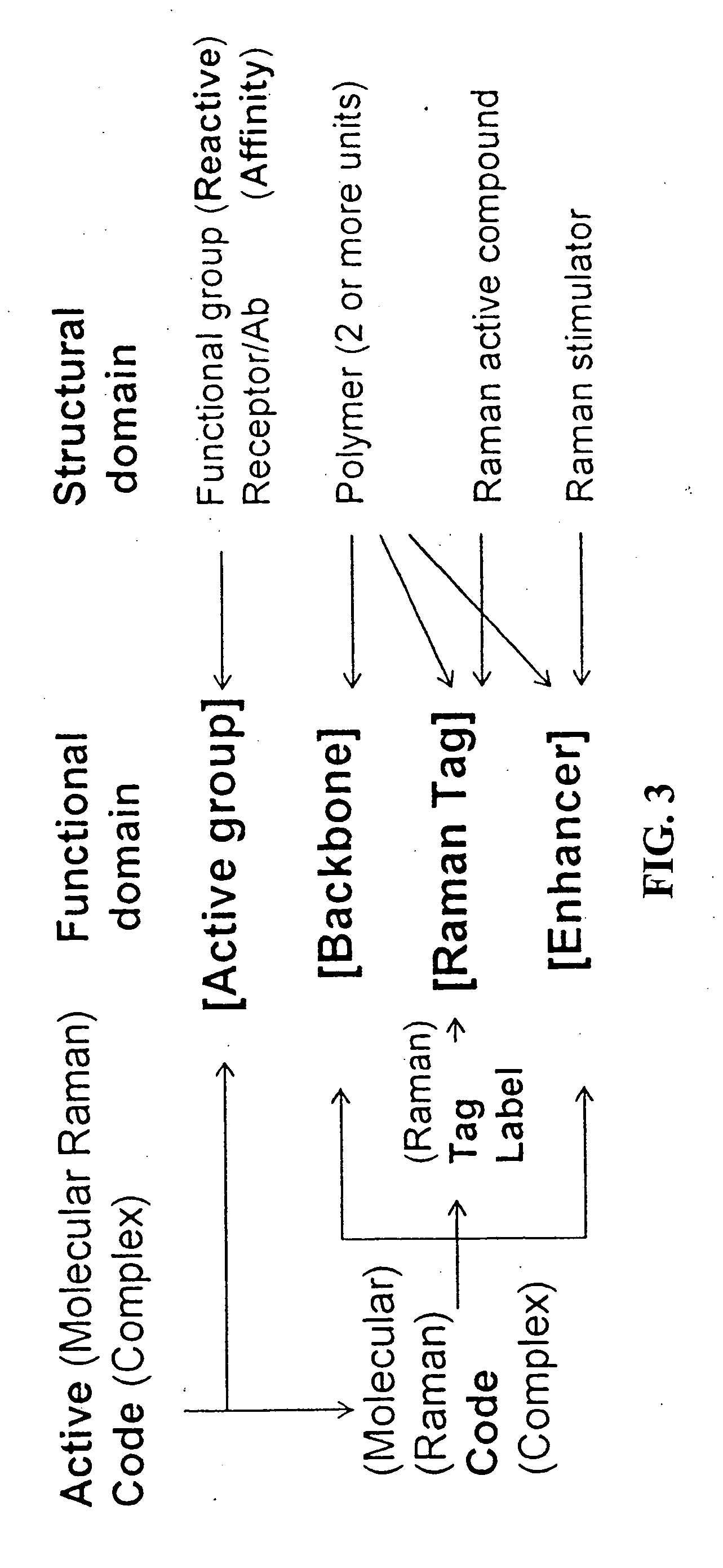Methods and devices for using Raman-active probe constructs to assay biological samples
- Summary
- Abstract
- Description
- Claims
- Application Information
AI Technical Summary
Problems solved by technology
Method used
Image
Examples
example 1
[0165] To identify cancer-related biomarkers, patient samples and control samples are collected. To increase screening efficiency, multiple patient samples are pooled to normalize the differences. A similar procedure is used for control samples. A pool of 1000 monoclonal antibodies is obtained and is divided into a first set of 200 groups (each with 5 members). Five antibody arrays, each having 200 discrete locations treated to immobilize antibodies, are prepared. The same 1000 antibodies are then grouped in a random order to form a second set of 40 sub-sets (each with 25 members) for use in synthesis of active molecular Raman codes. All 25 members of each of the 40 sub-sets are attached to the same molecular Raman code, using a total of 40 Raman codes to complete synthesis of the active molecular Raman codes. Afterwards, 25 40-member groups of the active molecular Raman codes are formed based on antibodies, each of the 40 members having a different Raman code.
[0166] The 25 groups ...
PUM
| Property | Measurement | Unit |
|---|---|---|
| Size | aaaaa | aaaaa |
| Electric charge | aaaaa | aaaaa |
| Fluorescence | aaaaa | aaaaa |
Abstract
Description
Claims
Application Information
 Login to View More
Login to View More - R&D
- Intellectual Property
- Life Sciences
- Materials
- Tech Scout
- Unparalleled Data Quality
- Higher Quality Content
- 60% Fewer Hallucinations
Browse by: Latest US Patents, China's latest patents, Technical Efficacy Thesaurus, Application Domain, Technology Topic, Popular Technical Reports.
© 2025 PatSnap. All rights reserved.Legal|Privacy policy|Modern Slavery Act Transparency Statement|Sitemap|About US| Contact US: help@patsnap.com



